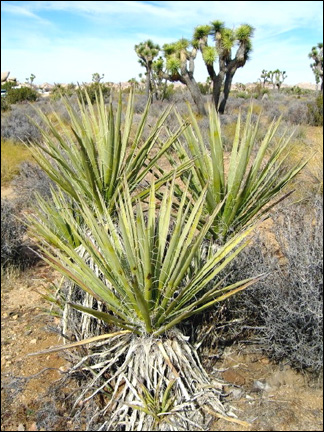

Mojave Yucca (Yucca schidigera)
Here is a quick and easy way to extract the long, white fibers from Yucca leaves.
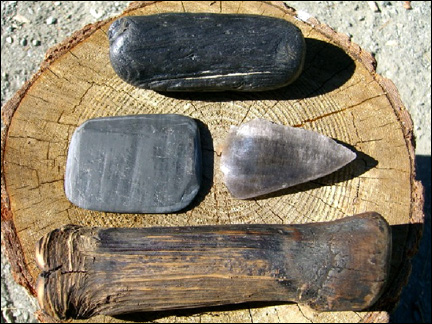
Here are the tools I will use: smooth pounders and blunt scrapers. My favorite pounder (the black one at the top) is a 23 million year old piece of fossilized burnt wood that I found on the beach in Washington. The pounder at the bottom is a slightly modified piece of Jeffrey Pine branch. The scrapers are slate and silver sheen obsidian (with the scraping edge ground on sandstone to blunt it).
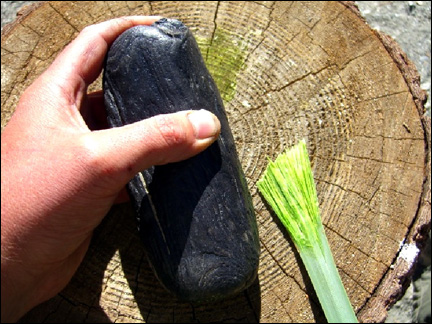
Lightly pounding the yucca leaf will result in the fibers loosening from the epidermis and flesh of the leaf. As shown, that leaf resembles some ancient yucca paintbrushes that have been found at archaeological sites in southern California.
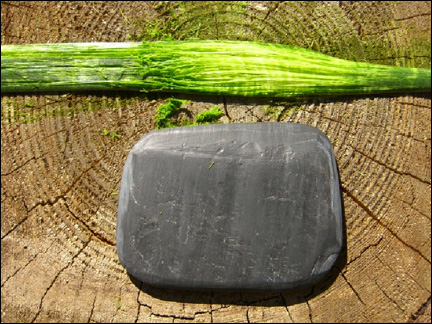
Having pounded the front and the back of the entire leaf, I will now scrape with moderate pressure (make sure the scraping edge is blunt or you will destroy the fibers) and remove some of the skin and flesh of the leaf.
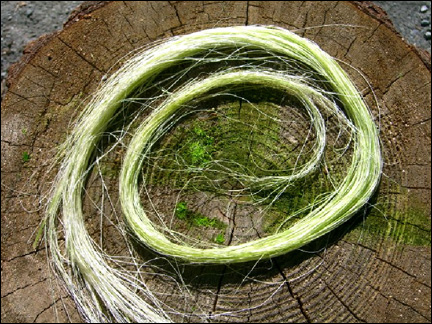
Results of the first scraping. Now I will wash the saponins (soap) and fleshy debris from the fibers and scrape them a second time. Removing as much of the chaff from the fibers as possible makes future cordage easier to make and somewhat stronger.
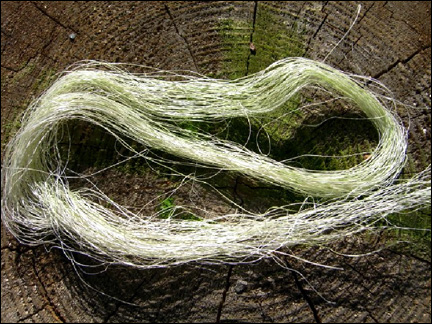
These yucca fibers have endured a third scraping (with my fingernail) and have been separated. They are ready to be made into fine cordage.
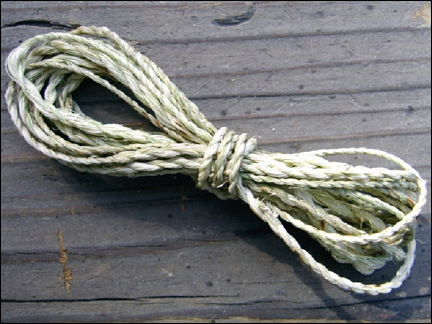
Here is ten feet of 4mm-thick, leg-rolled yucca cordage made from fibers that were scraped twice. Rope can be made from rough-processed fibers—you don’t need to remove all of the chaff (especially for large-diameter rope). This ten feet took about 15 minutes to leg-roll.
Visit Storm's website at www.stoneageskills.com.
Storm (1969 - 2008)
Storm immersed himself into the wellspring of adventure and the experience of the Stone Age. Thank you, Storm, for sharing your heartfelt enthusiasm of the wilderness and skills of the past through your engaging articles. You will be sorely missed.
We hope the information on the PrimitiveWays website is both instructional and enjoyable. Understand that no warranty or guarantee is included. We expect adults to act responsibly and children to be supervised by a responsible adult. If you use the information on this site to create your own projects or if you try techniques described on PrimitiveWays, behave in accordance with applicable laws, and think about the sustainability of natural resources. Using tools or techniques described on PrimitiveWays can be dangerous with exposure to heavy, sharp or pointed objects, fire, stone tools and hazards present in outdoor settings. Without proper care and caution, or if done incorrectly, there is a risk of property damage, personal injury or even death. So, be advised: Anyone using any information provided on the PrimitiveWays website assumes responsibility for using proper care and caution to protect property, the life, health and safety of himself or herself and all others. He or she expressly assumes all risk of harm or damage to all persons or property proximately caused by the use of this information.
© PrimitiveWays 2013